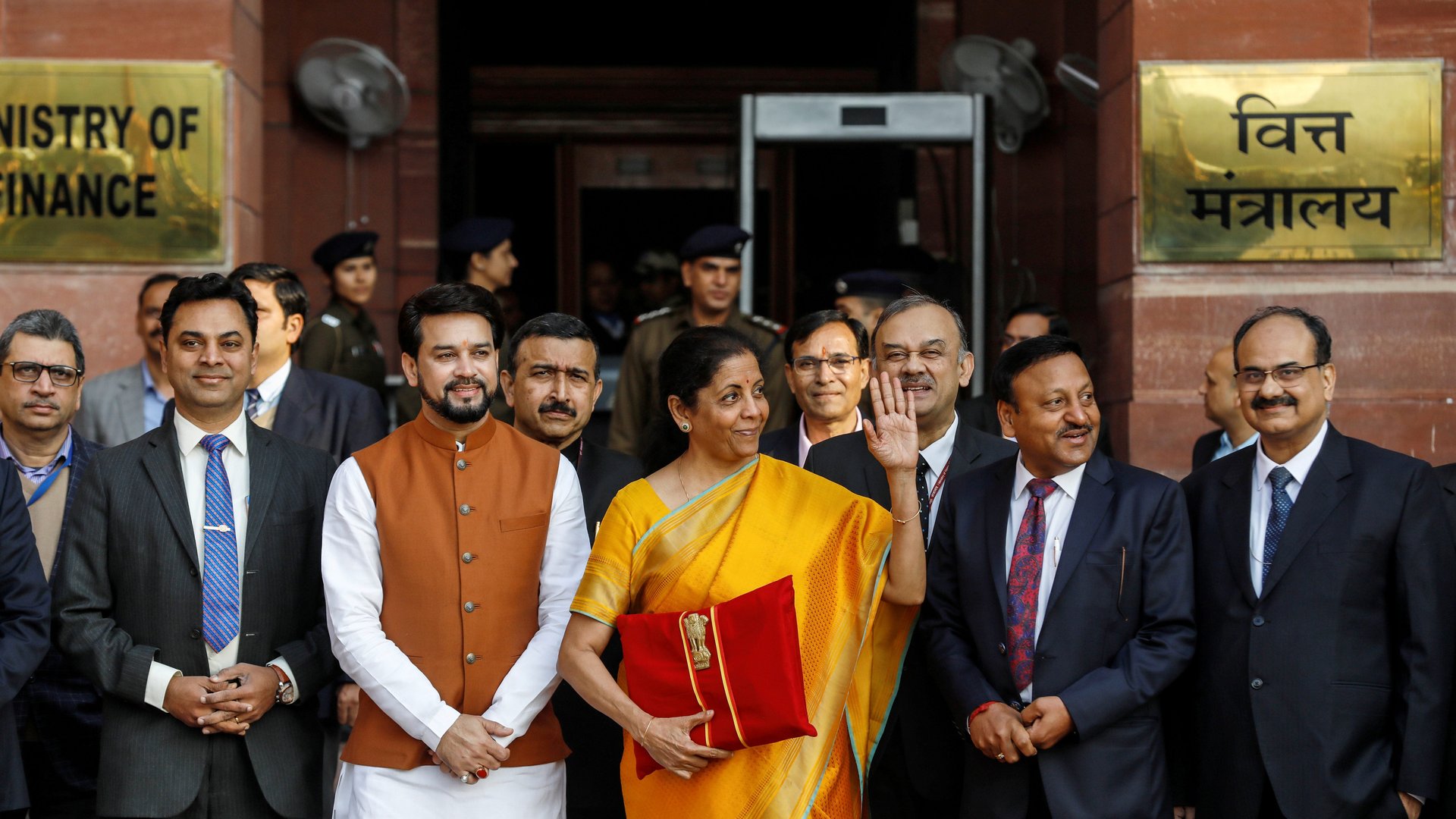The Modi government needs to fix India’s job crisis to fix the economy
As finance minister Nirmala Sitharaman prepares to announce India’s union budget for fiscal 2021-22 on Feb. 1, experts believe she could tackle myriad issues facing the country’s economy by relentlessly focusing on solving just one problem: unemployment.


As finance minister Nirmala Sitharaman prepares to announce India’s union budget for fiscal 2021-22 on Feb. 1, experts believe she could tackle myriad issues facing the country’s economy by relentlessly focusing on solving just one problem: unemployment.
India’s unemployment rate climbed to a six-month high of 9.06% in December, according to Mumbai-based think-tank Centre for Monitoring Indian Economy (CMIE). “The influx of people looking for work swelled. But, labour markets were not ready for this six-million surge in labour. It thus left them largely unemployed,” the CMIE report said. Official data on unemployment has not yet been released.
While moves like tax cuts and direct incentives to industries could provide some boost to the dwindling Indian economy, job creation could help tackle a wider issue. For example, with money in people’s hands, spending would improve and that could go a long way in bringing the economy back on track.
“India can’t continue to have jobless growth. Addressing this issue is extremely important for the overall growth of the economy,” said M Govinda Rao, chief economic advisor at Brickwork Ratings.
The CMIE’s report also warned that the rise in the unemployment rate raises serious doubts about the economic recovery process. “This across-the-board deterioration in labour market conditions raises concerns about the recovery process. This does not look like a problem of one sector or one region. It seems to be a secular decline.”
Focusing on job creation will also be a good bet given the fact that the Narendra Modi government has limited headroom to spend. This year, the Indian government will fall short of its tax revenue target due to unprecedented economic slowdown, hurting its ability to spend.
India’s unemployment crisis
The coronavirus outbreak and the ensuing lockdowns triggered a unique and damaging job crisis in India during 2020. In April and May, when the country was under strict government-mandated lockdown, around 10 million daily wagers fled cities—walking miles on foot—afraid of hunger and unemployment.
Many of these workers have stayed back in their villages as the pandemic is far from over. But there are not enough jobs in rural areas.
In December, for instance, the rural economy failed to absorb workers due to seasonal weakness, which meant the unemployment rate rose sharply, said Partha Chatterjee, head of economics department at Shiv Nadar University.
Even for those who returned to cities, the job scenario isn’t promising as the country’s economy is recovering at a slow pace. Chatterjee warns that more people are returning to cities will only lead to a rise in urban joblessness over the coming months.
India’s budget and unemployment
Given the limited scope to spend, Sitharaman could use a targetted approach to solving the job crisis.
The government should pump more money into boosting labour-intensive sectors such as housing and infrastructure, said Rao of Brickwork Ratings.
Both the Indian government as well as the private sector cut spendings on infrastructure projects in 2020, which meant fewer jobs were created. While the Indian government is hamstrung by a drop in revenue collection, the private sector is unwilling to commit due to contraction in sales and lack of demand.
“It has become a structural problem now. Besides increasing spends on infrastructure, the government needs to reduce the good and services tax (GST) rate for sectors like auto and construction to spur output. The construction inputs like cement and steel should be taxed at the general rate and not at 28%,” suggests Rao.
Another way the government could create more jobs is by bailing out medium, small and micro-enterprises (MSMEs), experts say. MSMEs, which are struggling to survive due to low demand, are the backbone of the Indian economy, employing 110 million workers out of the country’s total 427 million workforce.
“When the demand goes down, they (MSMEs) shed the workforce because they don’t have the cushion of capital like some large firms. So, it’s extremely important to help them stem joblessness,” said Chatterjee, pointing out that India can get inspiration from Germany’s Kurzarbeit programme. Under the Kurzarbeit programme, when the revenue falls, employers cut working hours rather than laying off people, and the state compensates employers for the loss.
Implementing innovative measures like Kurzarbeit is the need of the hour as solving the unemployment crisis can also revive the Indian economy.